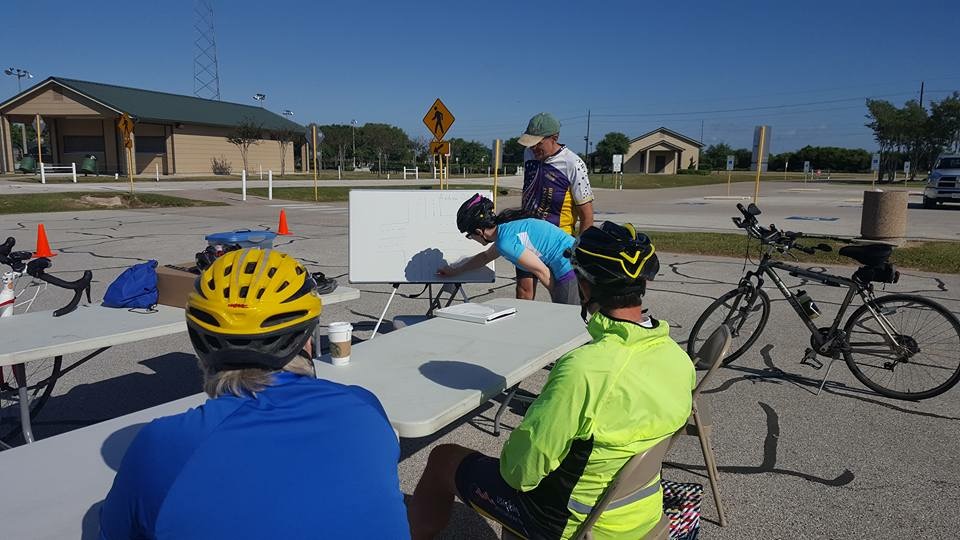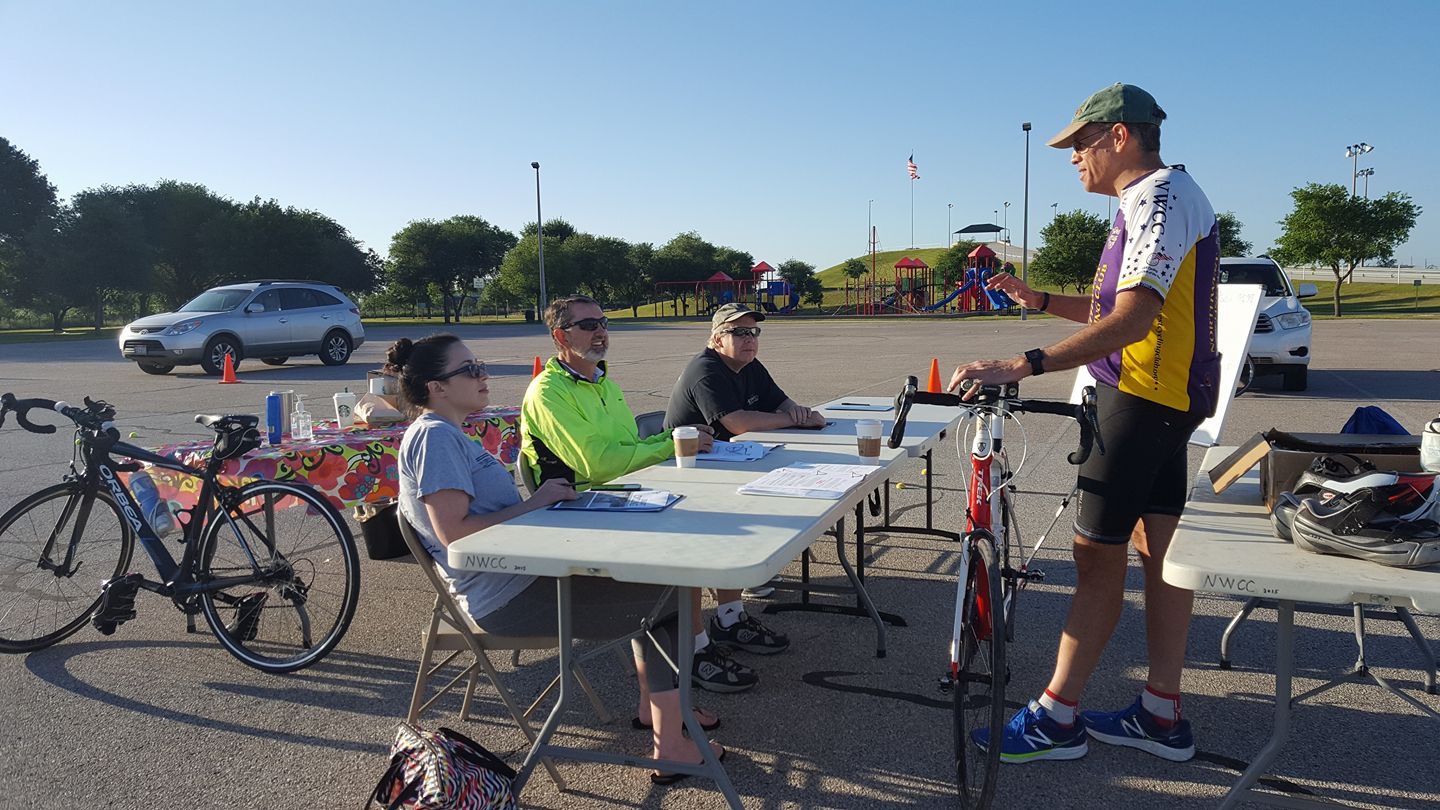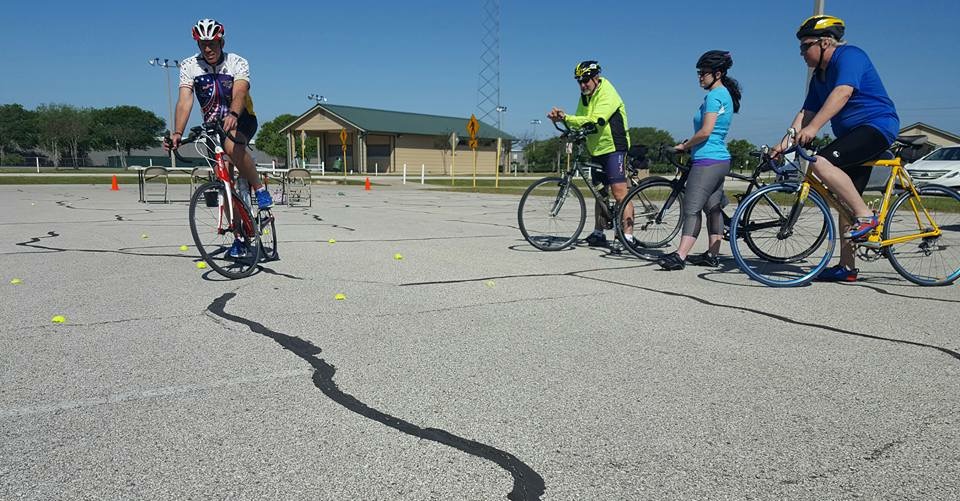One of the biggest springtime rides in the Houston area is the Bluebonnet Express, presented annually by the Northwest Cycling Club.
Rained out on April 2 and rescheduled for this Saturday, April 15, the BBX, as it’s known in shorthand, affords cyclists a prime training ride two weeks before the perennial Texas favorite, the BP MS 150 ride from Houston to Austin.

The BBX routes riders through Waller County, which has become a flashpoint for conflict between cyclists and local motorists as the hostility over shared road use grows. Several weeks ago, two cyclists participating in a charity event were struck and killed by a motorist near Brookshire.
With that rather sizeable elephant occupying the room, what steps can sensible cyclists take to protect themselves during the BBX?
Wheel Brothers turned to Mona Lincoln, safety chairman for the NWCC, for some answers.
Wheel Brothers: Given the current anxiety some cyclists are feeling about road sharing, what is the one single thing cyclists can do – in addition to following the rules of the road – to protect themselves as they share space with motorists during the BBX?
Mona Lincoln: Always make eye contact with the motorist and smile. Courtesy and predictability are key to safe cycling for cyclists as well as motorists.
2: Is there an additional action step that cyclists often forget but can prove crucial to their well-being?
Mona: Communicate your intentions –whether calling out to other cyclists or hand signaling as well as using hand signals to communicate to motorists. Again, predictability is key in safe cycling.
3: What are some other precautions a cyclist can employ to avoid a mishap with motorists?
Mona: Always be alert and aware of surroundings. It is advisable to not wear headphones/earbuds or listen to blaring music when riding in order to clearly hear your surrounds.
4: Entanglements with other cyclists is another cause of accidents. Speak to the importance of keeping an eye on both vehicles as well as fellow riders. Can you do both effectively?
Mona: Absolutely a cyclist can be conscious of both motorists and cyclists while riding. Don’t be distracted, be alert and pay attention to what is ahead, what is behind, who may be passing, watch the road and anticipate any problems. Do not follow too closely behind other cyclists, especially those that you do not know their cycling skills.
Some statistics on cycling accidents: 50% of crashes are simply the cyclist falling, 17% of crashes involve car and bike, 17% of crashes involve bike and bike, 8% of crashes involve dogs, 8% are everything else. (Source: League of American Bicyclists)
5: The BBX is a big event with several thousand riders expected. The MS 150, of course, will be even bigger in scope. What special safety challenges does the MS 150 pose?
Mona: A special safety challenge for the BP MS 150 is inexperienced and untrained/unprepared cyclists. Every year 40% of the riders are first-time 150 participants. Many of those riders will not have properly trained to build up to traveling two days of over 70 miles each day or trained enough for perfecting their shifting skills for climbing hills. These riders are a danger to other cyclist as they will be weaving trying to climb and then out of exhaustion and going too slow they are unable to clip out fast enough to prevent falling over.
Also, BP MS 150 states that every year the number one cause for needing medical attention is dehydration, a serious medical condition.

6: Accidents happen to riders of all skill levels. What would you say to a new rider who is concerned about their wellbeing while sharing the road?
Mona: Quite simple—take a Traffic Skills 101 class offered through League of American Bicyclists taught by Licensed Certified Instructor. Personally taking the class made the most profound difference in my confidence and ability to ride solo in traffic as well as riding out on the roads in a group.
7: Is there any aspect of safety that presents itself in a charity ride but not a routine group training ride?
Mona: When groups of friends go out to train together often they take their breaks at gas stations or convenience stores – it’s pretty much easy in easy out. On charity rides, break points are usually set up in open fields with either grass, dirt, or gravel entrances. This is where accidents tend to happen. Also, in a charity ride you are likely to be in close proximity with those whose riding skills you do not know, in routine group training rides you are riding with those whom you are familiar and are predictable.
8: Cyclists are a social bunch. Riding in single file feels safer, but there’s not as much chit-chat out there. Are safe riding and fun riding mutually exclusive?
Mona: Legally, cyclists are allowed to ride two abreast as long as they do not block the reasonable flow of traffic. Safe riding takes priority over fun riding. There are opportunities in group rides where there is little traffic. As long as everyone is aware that as soon as they hear “car up”, “car back”, “rider back” or “passing left” it is time to “single up.” The wonderful aspect of group riding is most times the real social part comes after the ride! We save the best for last!
9: Texas boasts many cycling clubs throughout the state. How can a cycling club be a positive agent for safe riding?
Mona: Statistics show people who are members of a cycling club get in fewer accidents than those who are not. Cycling clubs tends to promote a culture of safety. Riders educate each other both formally and informally. For instance, NWCC offers no-drop rides in which newer cyclists are mentored and encouraged to take safety classes. NWCC offers eight or nine safety classes per year.

Northwest Cycling Club, based in Houston, is a four-time USA Cycling Club of the Year, earning the honor in 2005, 2012, 2013 and 2014. Club members ride every Saturday morning, rain or shine. To learn more, visit NWCC.bike or like the club on Facebook.
